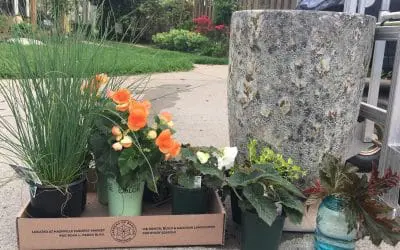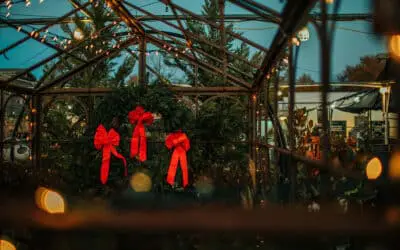–
Can you feel it in the air? Spring is on the way! If you plan to grow vegetables, herbs, or flowers this season, now’s the time to start planning. Starting transplants from seeds is an affordable and rewarding way to fill your garden with favorites like tomatoes, peppers, greens, zinnias, and marigolds.
When to Start Seeds Indoors
The best time to start seeds indoors depends on:
- The plant’s growth rate (check the seed packet for germination time).
- Your local last frost date (Mid-April in Middle Tennessee).
- The recommended outdoor planting time.
Here’s a quick guide for popular plants:
- Warm-season flowers & veggies (like tomatoes and zinnias) → Start seeds indoors 5–7 weeks before planting outdoors (Early to Mid-March).
- Cool-season vegetables (like lettuce, broccoli, and cauliflower) → Start 4–7 weeks before soil is workable (January to February).
- Always refer to the seed packet instructions for the best timing and specific planting guidelines.
How to Start Seeds Indoors
- Choose a Container – Use a seed-starting tray, peat pots, coir pots, or upcycled containers (milk cartons, egg crates, tin cans). Just make sure they have drainage holes!
- Use the Right Soil – Best choice: A light, well-draining seed-starting mix (or a fine-textured potting mix for houseplants like African violets). Avoid: Garden soil—it’s too heavy and may contain weeds or bacteria.
- Plant Your Seeds
- Fill your container with soil.
- Use a pencil to make shallow holes (no deeper than 4x the seed’s diameter).
- Drop in one or two seeds per section and cover lightly
- Mist the soil gently with a spray bottle to keep it evenly moist.
- Cover with clear plastic or a seed-starting lid to retain moisture.
Providing Light & Water
Watering
- Check daily! The soil should stay moist but not soggy to prevent damping off (a fungal disease that kills seedlings).
- A spray bottle is best to avoid disturbing the seeds.
Lighting
- Place trays in a bright window with plenty of natural light.
- If natural light is limited, use a grow light set on a 14–16 hour timer (positioned 6–12 inches above the seedlings).
Bonus Tip: Use a small fan to create gentle air circulation. This strengthens plant stems and reduces mold.
Transplanting & Hardening Off
As seedlings grow, they’ll need more space:
- Transplant into larger pots (peat or coir pots are great, as they can go directly into the ground).
- Hardening off: Before planting outdoors, gradually expose seedlings to outdoor conditions for a few hours each day over a week.
- Planting time: In Middle Tennessee, cool-weather crops go out in late February/March, while summer vegetables and flowers can be planted mid to late April.
What to Plant – Staff Favorites!
Flowers & Herbs:
- Sunflowers
- Zinnias
- Milkweed
- Variegated Nasturtium
- Lemon Balm
- Flower Mix Pollinator
- Basil
- Fun Pick: Cat Grass (for our shop cats, Diane & Paige!)
Starting seeds indoors is a fun and rewarding way to get a jumpstart on spring gardening. Stop by Gardens of Babylon to pick up seeds and supplies, and let’s grow something great together!





